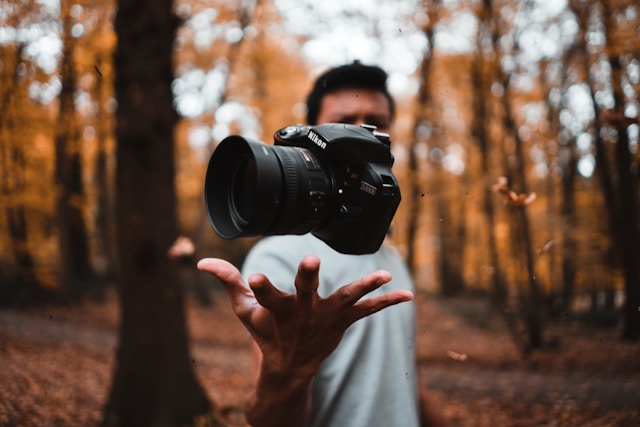Key Takeaways:
- The significance of photography in capturing personal and historical narratives.
- How technological advancements have shaped the craft and accessibility of photography.
- The therapeutic and educational power of photography.
- The art as a source of creative and ethical discourse.
Table of Contents:
- Understanding the Impact of Photography on Memory and History
- The Evolution of Photographic Techniques and Technology
- Creative Expressions Through Photography
- The Influence of Photographic Storytelling on Social Media
- Preserving Personal Milestones and the Everyday
- Photography in Education: A Tool for Learning and Engagement
- The Therapeutic Benefits of Photography
- Challenges and Ethical Considerations in Photography
- Future Projections: The Next Chapter in Photographic Storytelling
- Resources for Aspiring Photographers
Understanding the Impact of Photography on Memory and History
Imagine a window into the past—a frozen moment that we can return to repeatedly, reliving memories and feelings elicited by a simple image. Photography’s ability to preserve our personal and collective histories is profound. A family album, an old photograph from a bygone era, or a candid dog photoshoot in Phoenix MD, can all remind us of our life’s irreplaceable moments and characters. The visual narrative created through photography is unlike any other medium, for its power lies in its ability to capture the nuances and emotions of an instant.
Historically, photography has been crucial in documenting significant events and shaping our world understanding. A powerful image can articulate the spirit of an era or a considerable event more effectively than a written account. From war-torn landscapes to the triumph of human achievements, photographs bind us to our antecedents and each other, offering a shared context to our diverse stories.
The Evolution of Photographic Techniques and Technology
The alchemy of early photography, where images appeared like magic on silver-coated plates, has given way to today’s instant digital gratification. The trajectory of photographic technology is marked by constant innovation. From the advent of color film to the pixel-perfect clarity of digital cameras, each advancement has increased opportunities for artists, journalists, and amateurs alike to capture their world and express their perspectives.
Today’s photographers wield a wealth of technologies that would be unrecognizable to the art pioneers. Modern cameras offer the ability to seize details in near darkness, freeze motion in a fraction of a second, and distill vast landscapes into panoramic splendors. Through smartphones, photography has become democratized—now, anyone with a phone can document their existence and contribute to the tapestry of human experience.
Creative Expressions Through Photography
More than a method of documentation, photography is an art form that allows for a personalized interpretation of the world. Each photograph is a creator’s vision brought to life, be it a surrealist landscape, a haunting portrait, or a streetscape brimming with stories. The camera lens focuses the viewer’s attention, guiding them through the storyteller’s unique perspective. Through the choice of subject, composition, and lighting, photographers sculpt scenes from reality, each click of the shutter a deliberate act in their visual narration.
Artistic expression within this medium has vastly expanded with digital innovation, introducing an array of tools for photographers to push the boundaries of their work. Software and applications empower creators to manipulate images, blending photography with graphic design to produce compelling visual pieces that resonate with audiences on a visceral level.
The Influence of Photographic Storytelling on Social Media
In an era where billions of images circulate on various platforms, social media has become a decisive stage for photographic storytelling. Such platforms empower individuals to share snapshots of their lives with a broad audience, creating visual diaries accessible to friends and strangers alike. These platforms’ hashtag culture and image-centric nature encourage users to narrate their stories visually, highlighting salient moments with striking images that capture the flavor of their experiences.
Moreover, photography on social media can shed light on underrepresented voices, catalyze social movements, and stir the collective consciousness. Social media networks have nurtured global communities where users bond over shared photographic interests in travel, fashion, gastronomy, or countless other passions. These digital galleries reflect a profound shift in how photography is consumed and appreciated, emphasizing the narrative power of a well-crafted image.
Preserving Personal Milestones and the Everyday
The rapid click of a camera’s shutter can capture the fleeting expressions of joy, the glow of a sunset, or the tenderness of a shared glance—simple yet profound moments that define the human experience. Photography not only bookmarks life’s grand occasions but also the quiet intervals of daily existence. Much like a visual journal, photography chronicles our journey, lending permanence to the brief and reminding us of our past joys, struggles, and the ordinary days in between.
Whether a collection of images from a once-in-a-lifetime trip or a series of candid shots from a regular day, these visual records remind us of who we were at various times. The power of photography to evoke the ambiance of the past is unparalleled, often bringing back a flood of feelings with a clarity that might otherwise have been lost to the recesses of memory.
Photography in Education: A Tool for Learning and Engagement
Photography’s role extends into education, serving as a compelling aid for instruction and engagement. In classrooms worldwide, images bring clarity to complex subjects, inspire creativity, and connect learners with the material meaningfully. The visual element provided by photographs can be particularly impactful for visual learners who thrive on imagery and spatial understanding.
Educators use photography to connect with historical events, scientific phenomena, and cultural explorations, making abstract concepts tangible. Visual storytelling can evoke curiosity, foster empathy, and promote a more profound understanding of the world, proving that photography can be as educational as it is aesthetically pleasing.
The Therapeutic Benefits of Photography
Photography transcends its role as a creative outlet and can be therapeutic. Engaging in photography allows individuals to externalize their inner experiences, provides a platform for self-expression, and can be a potent way to communicate emotional states that are otherwise hard to articulate. For some, photography is akin to meditation, requiring the presence of the mind and fostering a connection with the immediate environment.
Photographers often discover peace and purpose through their lens by finding beauty and meaning in the mundane. As an accessible and flexible art form, it can be invaluable in managing stress, navigating emotional challenges, and cultivating a favorable mental landscape.
Challenges and Ethical Considerations in Photography
The power of photography to influence perception comes with significant responsibilities. Ethical challenges present themselves in various forms, from respecting subjects’ privacy to portraying reality versus artistic expression. Photographers make decisions that respect their subjects’ integrity while fulfilling their work’s narrative purpose.
Questions around consent and representation are especially pertinent in a world where images are instantly shared and disseminated globally. The conversation continues within the industry, as professionals and hobbyists alike strive to uphold ethical standards that respect individuals and communities while continuing to push the envelope of creative expression.
Future Projections: The Next Chapter in Photographic Storytelling
Looking towards the horizon, the future of photography is vibrant with potential. Rapid tech innovations hint at new avenues through which stories will be told and experiences shared. Augmented reality (AR), virtual reality (VR), and AI-driven enhancements are beginning to transform how we perceive and interact with images, setting the stage for a new wave of visual communication.
However, What remains constant is the human desire to narrate our stories—to illustrate our lives and find resonance with others. As technology progresses, the symbiosis between machine precision and human emotion will continue to chart the course for the evolution of photography.
Resources for Aspiring Photographers
Those inspired to delve deeper into the art and craft of photography can take advantage of a vast array of online resources. Websites and publications like the New York Times provide archival insights that highlight the profound impact of the medium on our collective historical memory. Such resources offer an understanding of photography’s vital role in capturing human progress’s flux and everyday life’s quotidian beauty.
Moreover, embracing the vital facets of photography is aided by the educational material available, such as National Geographic’s exploration of photography as a healing art. These resources enrich practitioners’ and enthusiasts’ practice, providing new perspectives and avenues to harness the transformative power of capturing light and life through a lens.



